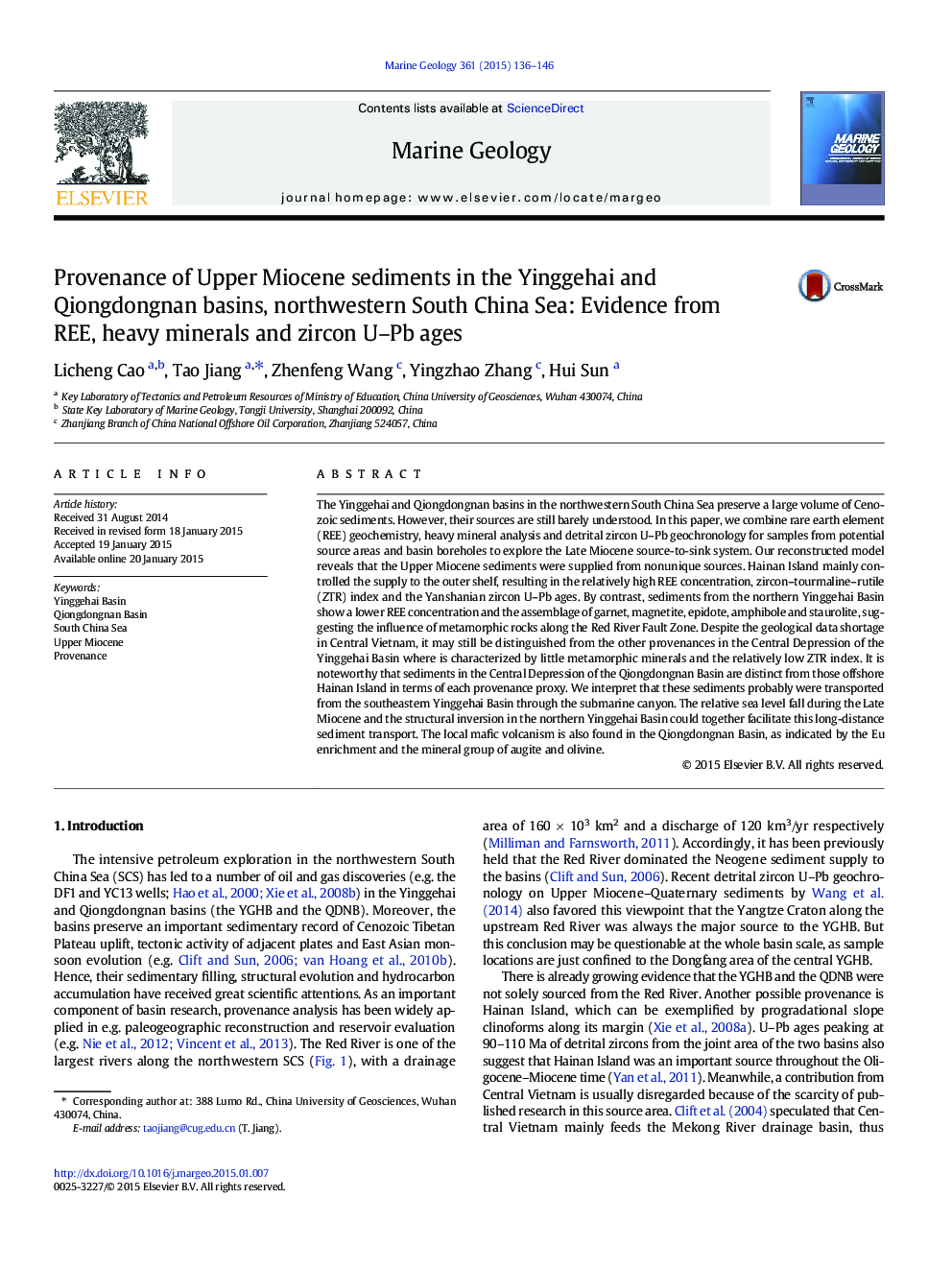| کد مقاله | کد نشریه | سال انتشار | مقاله انگلیسی | نسخه تمام متن |
|---|---|---|---|---|
| 6441559 | 1639091 | 2015 | 11 صفحه PDF | دانلود رایگان |
عنوان انگلیسی مقاله ISI
Provenance of Upper Miocene sediments in the Yinggehai and Qiongdongnan basins, northwestern South China Sea: Evidence from REE, heavy minerals and zircon U-Pb ages
دانلود مقاله + سفارش ترجمه
دانلود مقاله ISI انگلیسی
رایگان برای ایرانیان
کلمات کلیدی
موضوعات مرتبط
مهندسی و علوم پایه
علوم زمین و سیارات
ژئوشیمی و پترولوژی
پیش نمایش صفحه اول مقاله

چکیده انگلیسی
The Yinggehai and Qiongdongnan basins in the northwestern South China Sea preserve a large volume of Cenozoic sediments. However, their sources are still barely understood. In this paper, we combine rare earth element (REE) geochemistry, heavy mineral analysis and detrital zircon U-Pb geochronology for samples from potential source areas and basin boreholes to explore the Late Miocene source-to-sink system. Our reconstructed model reveals that the Upper Miocene sediments were supplied from nonunique sources. Hainan Island mainly controlled the supply to the outer shelf, resulting in the relatively high REE concentration, zircon-tourmaline-rutile (ZTR) index and the Yanshanian zircon U-Pb ages. By contrast, sediments from the northern Yinggehai Basin show a lower REE concentration and the assemblage of garnet, magnetite, epidote, amphibole and staurolite, suggesting the influence of metamorphic rocks along the Red River Fault Zone. Despite the geological data shortage in Central Vietnam, it may still be distinguished from the other provenances in the Central Depression of the Yinggehai Basin where is characterized by little metamorphic minerals and the relatively low ZTR index. It is noteworthy that sediments in the Central Depression of the Qiongdongnan Basin are distinct from those offshore Hainan Island in terms of each provenance proxy. We interpret that these sediments probably were transported from the southeastern Yinggehai Basin through the submarine canyon. The relative sea level fall during the Late Miocene and the structural inversion in the northern Yinggehai Basin could together facilitate this long-distance sediment transport. The local mafic volcanism is also found in the Qiongdongnan Basin, as indicated by the Eu enrichment and the mineral group of augite and olivine.
ناشر
Database: Elsevier - ScienceDirect (ساینس دایرکت)
Journal: Marine Geology - Volume 361, 1 March 2015, Pages 136-146
Journal: Marine Geology - Volume 361, 1 March 2015, Pages 136-146
نویسندگان
Licheng Cao, Tao Jiang, Zhenfeng Wang, Yingzhao Zhang, Hui Sun,